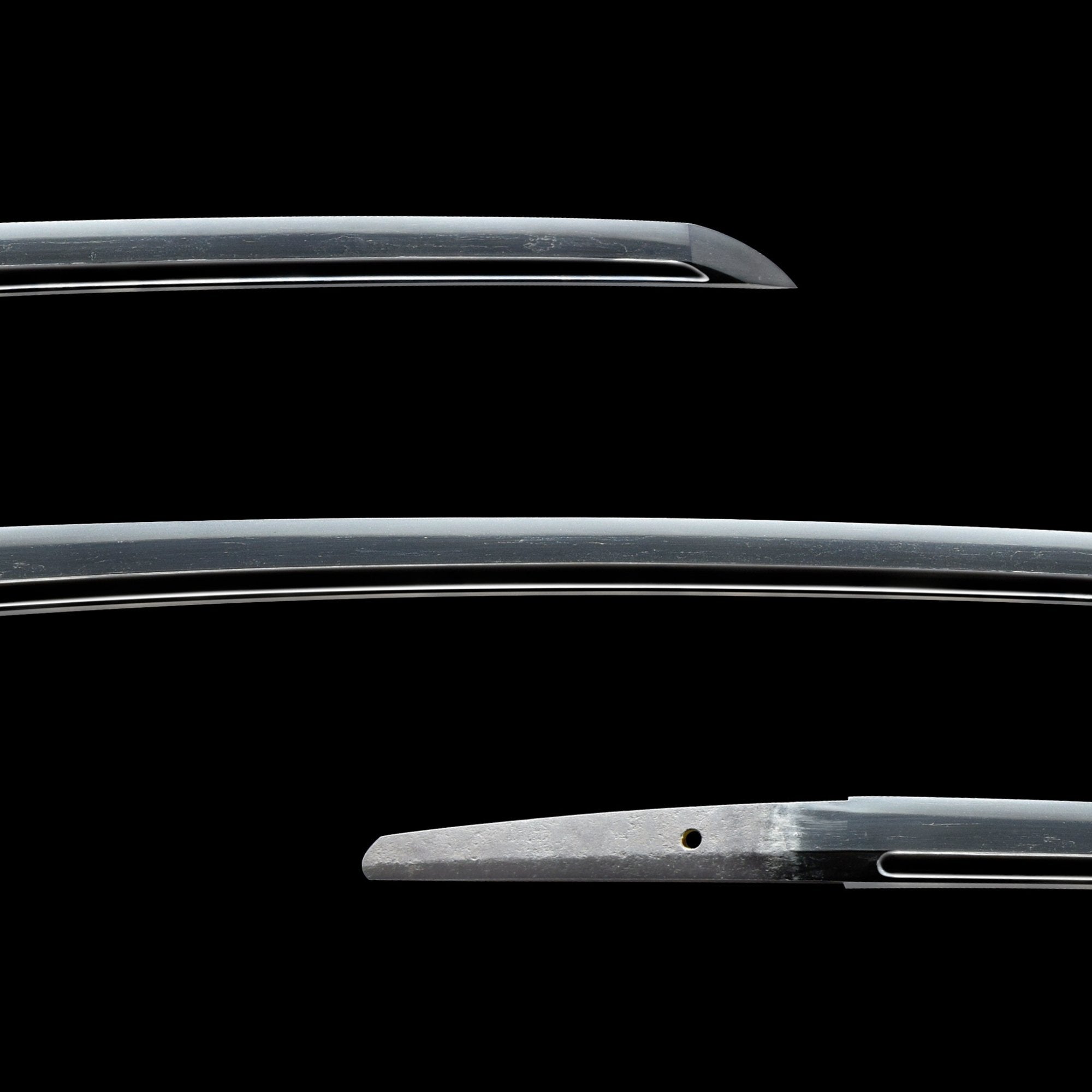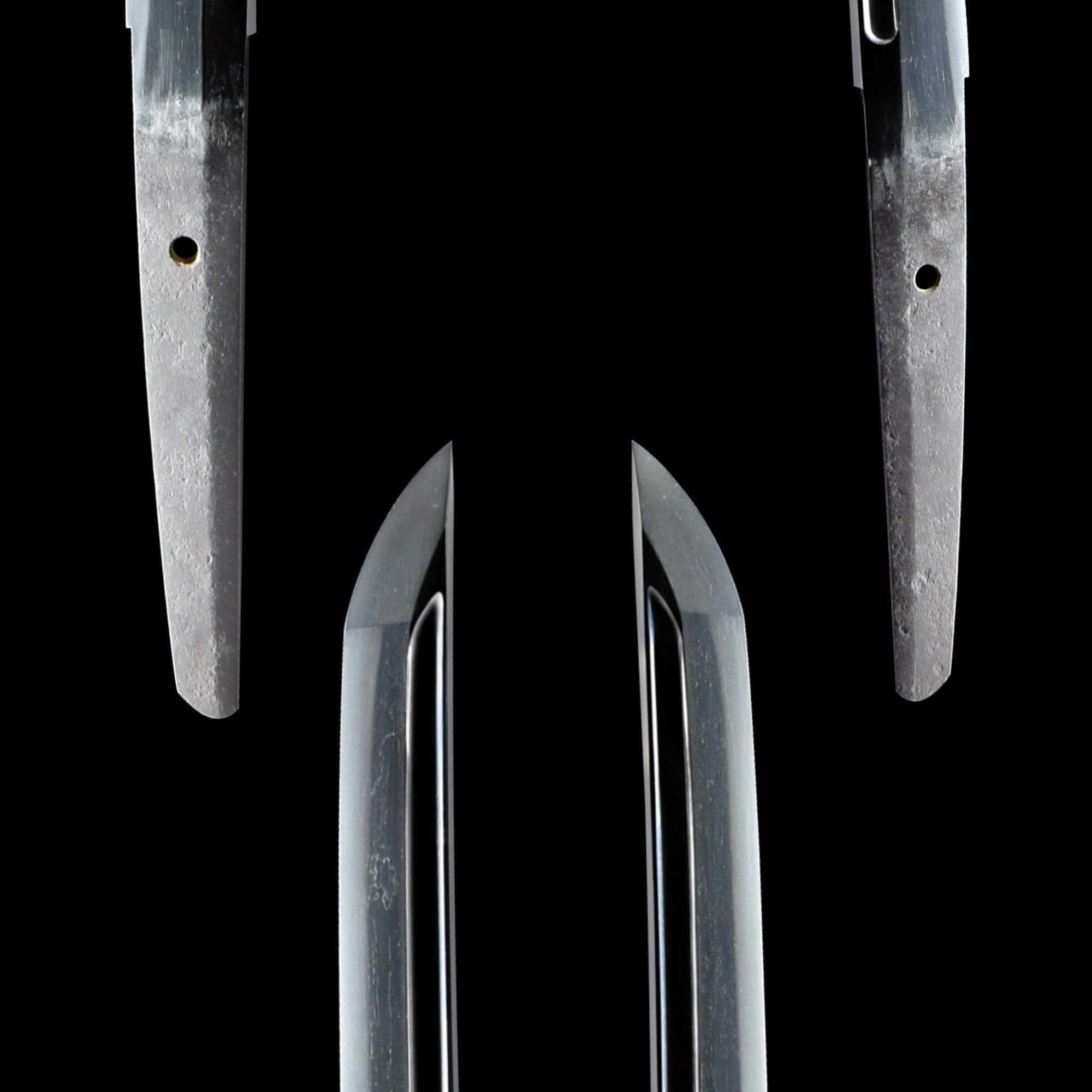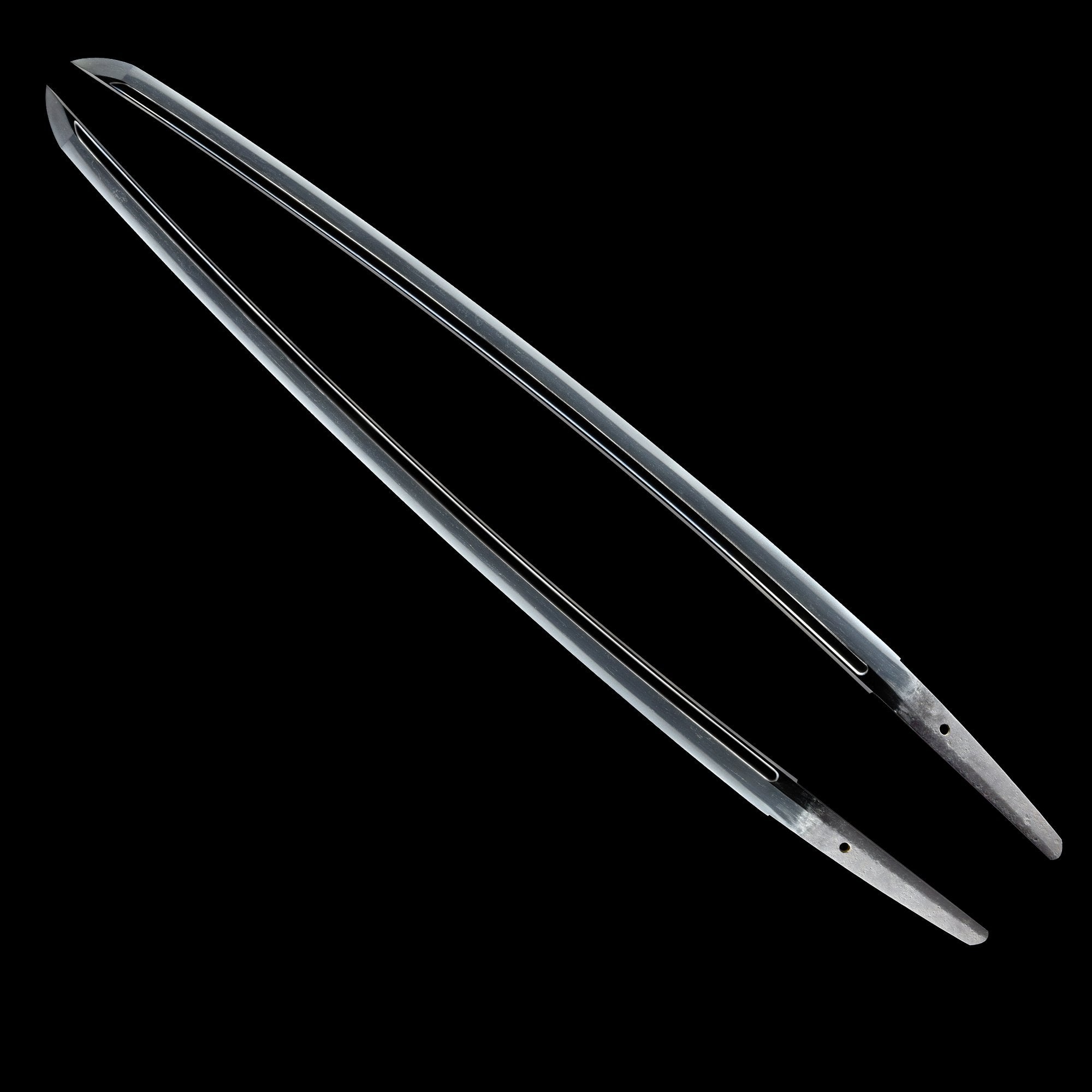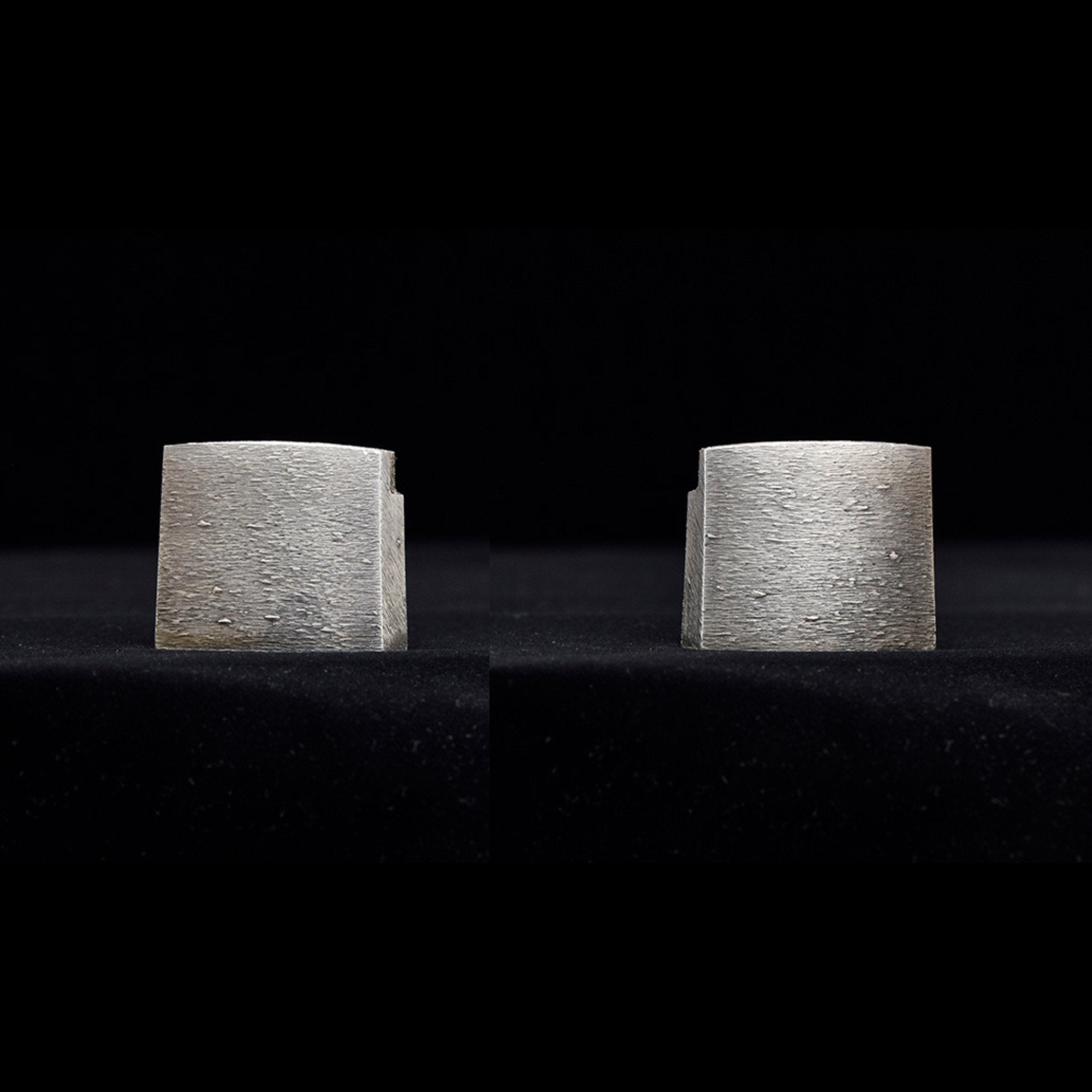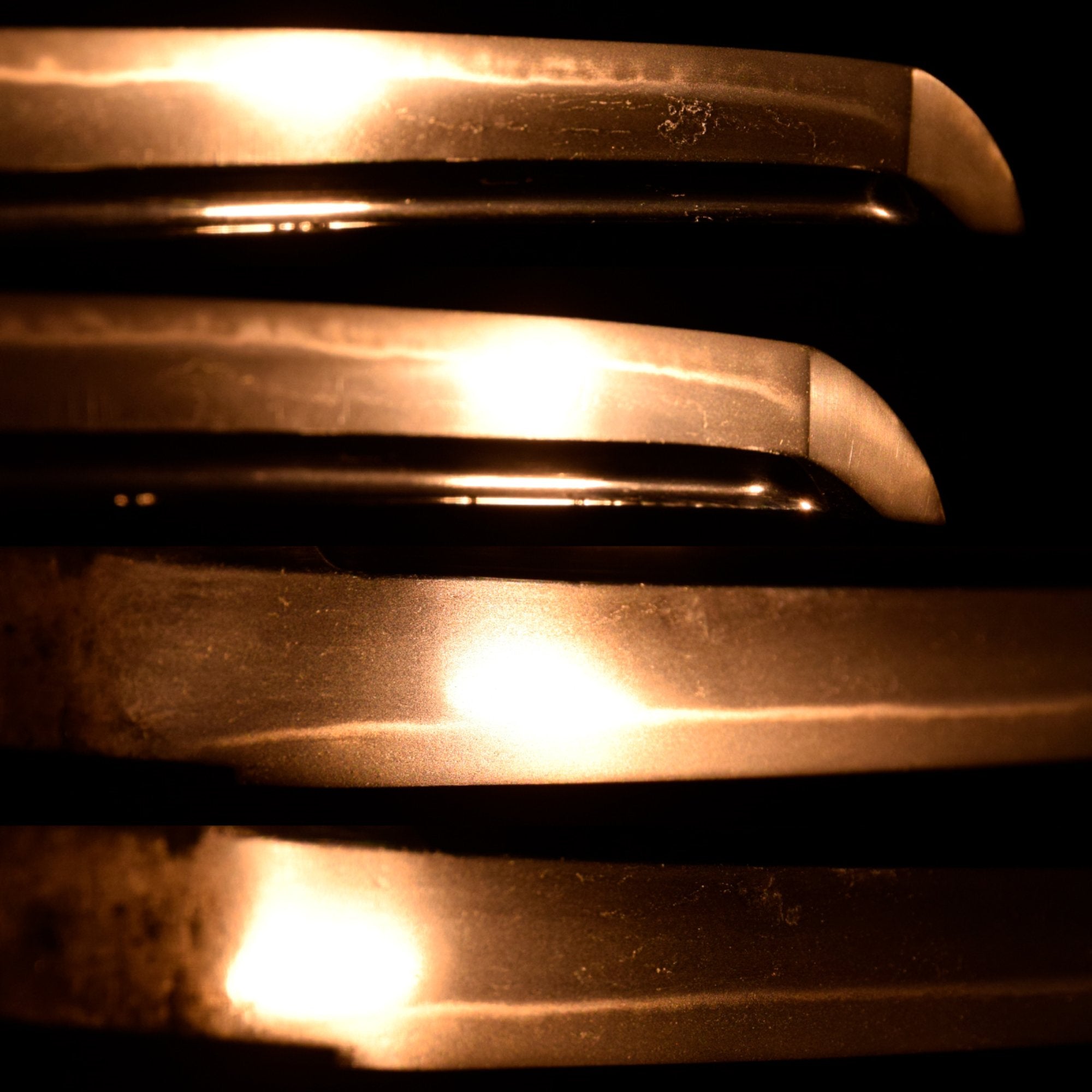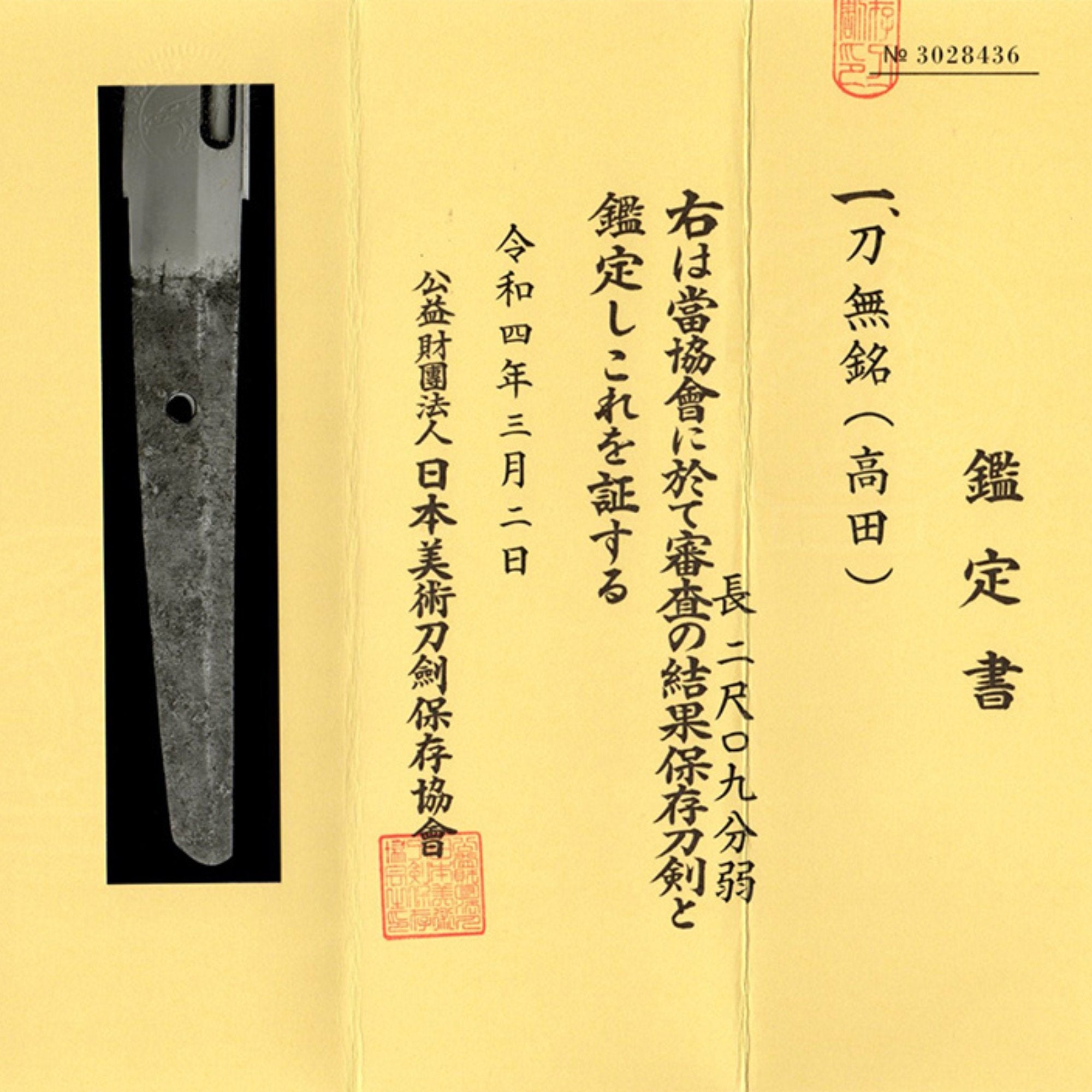Description
Authentic Nihontō Japanese Sword Katana Attributed to Takada 高田 NBTHK HOZON TŌKEN Certificate
The 豊州高田派 (Hōshū Takada school) was a group of swordsmiths that flourished during the 南北朝時代 (Nanbokuchō period) around 豊後高田 (Bungo Takada), now Takada Village in Ōita District within present-day Ōita City. The school's founder was 友行 (Tomoyuki), a disciple of Chikuzen Sōden from the Kenmu period.
In the Koto period, many works bore the 平 (Taira) surname, and these are referred to as 平高田 (Taira Takada). From the Shinto period onward, the swords were signed with the 藤原 (Fujiwara) surname, and the school became generally known as 藤原高田 (Fujiwara Takada). This school has been highly regarded for its practical swords since ancient times and was favored by many warriors as 武用刀 (military swords). During the Sengoku period, the school served as the official swordsmiths for 大友宗隣 (Ōtomo Sorin) of Bungo Province and catered to the demands of powerful families across Kyushu, achieving prosperity comparable to the 関鍛冶 (Seki swordsmiths) in Mino Province and the 長船鍛冶 (Osafune swordsmiths) in Bizen Province.
Their styles were broad, including 備前 (Bizen) and 相州 (Sōshu) influences, 美濃伝風 (Mino-style) three-peak gunome (tobiyaki), and 山城風 (Yamashiro-style) swords with koshi-zori and suguha. The characteristic feature of their suguha is the presence of “leaves” described as needle-like lines within the blade. In the Shinto period, the school was centered in 高田 (Takada) but also had forges in places like 小倉 (Kokura) in 豊前 (Buzen) and 中津 (Nakatsu) in 豊後 (Bungo).
This sword is not suriage (shortened) but ubu (original condition), and as inferred from the short nakago and short blade length, it follows the one-handed tachi style popular in the mid-Muromachi period. The width difference between the base and tip is well-proportioned, with a slightly extended tip, making for an elegant appearance. The bo-hi (groove) on both sides ends in marudome (rounded end). The mokume hada (wood grain pattern) of the steel is slightly raised. The hamon is a bright, clear suguha based on small nie, with frequent ashi creating a straight suguha mixed with small gunome midare. The hamon widens below the yokote, and the boshi is straight with a rounded return on both sides.
With the bo-hi, this sword can also be enjoyed as a military sword for a young boy. It has a well-balanced feel when held.
Bare weight: 555 grams.
Nihontō Information
| Name 名称 | 銘(高田) - Mumei(Takada) |
| Blade Length 刀長 | 二尺八分四厘弱 / 63.16 cm |
| Sori 反り | 四分九厘強 / 1.5 cm |
| Blade Width 元幅 | 29.1 mm |
| Blade Thickness 元重 | 8.2 mm |
| Tip Width 先幅 | 物打22.3 mm 横手位置20.7 mm |
| Tip Thickness 先重 | 物打6.2 mm 松葉位置5.1 mm |
| Mekugi-ana 目釘穴 | 1個 |
| Age 時代 | 室町中期~後期 The middle ~ latter period of Muromachi era (14th ~ 16th century) |
| Certificate 鑑定書 | 保存刀剣鑑定書(NBTHK HOZON TOKEN Certificate) |
| Registration 登録 | 昭和40年9月2日 兵庫県登録 Registered on September 2, 1965 in Hyogo Prefecture |
| Included 附属 | 銀はばき(Silver Habaki) |
| - 白鞘 (Shirasaya Case) | |




